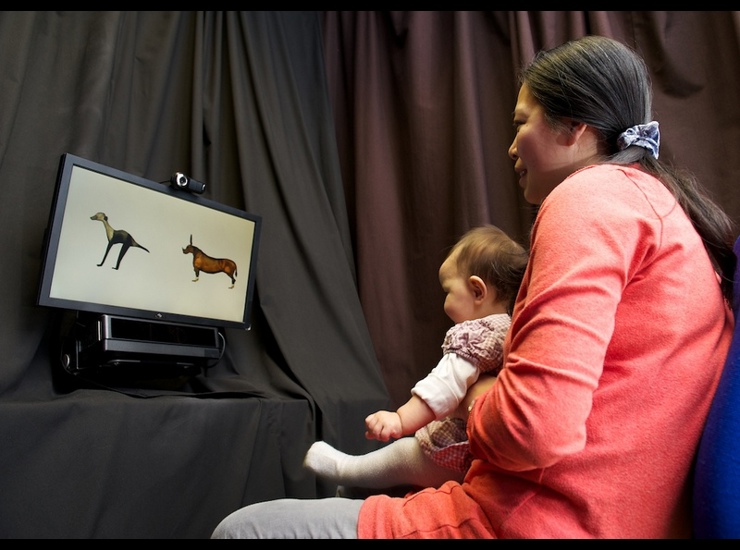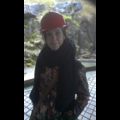
Anyone who’s spent time with a young child knows that they pick up words very quickly! But it’s less well-known that learning a word for something fundamentally changes the way children interact with that thing. In a fascinating recent study, researchers from Lancaster University showed 10-month-old babies a series of pictures of made-up cartoon animals . All the animals belonged to the same category, but importantly, the pictures were created especially for the study. Using these “novel” stimuli meant that the researchers could be sure that babies’ behaviour was related only to what they’d learned from the pictures that day, and not based on anything they might have learned at home, for example.
Half the babies saw a series of eight pictures on a computer screen and heard a nonsense word (e.g., “Look! A blicket!”), and the other half saw the same eight pictures, but heard two words which divided the pictures into two categories. As a real-world example, imagine a series of pictures: four cats and four kittens. One group of babies would see all eight pictures and hear “Look! A cat!”, while the other would hear “Look! A kitten!” during the kitten pictures, and “Look! A cat!” during the cat pictures. Importantly, all babies saw the same pictures in the same order: the only difference between the two groups was the word they heard.
After babies has been shown all eight pictures (known as “familiarisation” in the trade!) the researchers showed babies new pictures – some of which were members of the familiarised category, and some of which were not. Astonishingly, the way in which babies looked at these new pictures suggested that simply hearing different words had affected how they had learned about the pictures: babies in the first group formed a single category (e.g., all the pictures are cats), whereas babies in the second group grouped the pictures into two categories (e.g., four pictures are cats, four pictures are kittens). This is the kind of finding that developmental psychologists get very excited about! It suggests that all else being equal, the words babies learn can actually affect how they see the world.
This study extends this idea. Based on predictions made by a computer simulation of babies’ word learning [2], we’re interested in what might be going on when word learning interacts with learning about objects. The simulation predicts that if a baby has an equal amount of experience of two items, but knows a word for one of those items, they should interact differently with the named item even when they don’t hear the word for that item. To explore this idea, we’ve been giving parents two toys and asking them to play with them with their baby, every day for a week, or asking them to read their baby a book containing photos of the objects, again for a week. The clever bit is that only one of the toys will have a name. After a week, we invite parents back to the Babylab to take part in an eye-tracking study, during which we showing babies pictures of the two objects on a computer screen and record where and for how long they look (more information on eye-tracking is available here). If we’re right, and knowing a name for an item does change the way babies react to it, we should see a difference in the amount of time babies spend looking at the named and unnamed objects.
What’s most intriguing about this study is that the babies taking part are at the very beginning of language acquisition – at this age they say few, if any, words. So, it’s possible that this study might reveal the astonishing effect of learning words on our perception of the world even before speech starts! If so, this will provide evidence that language influences the way we think from a very early age indeed. We’ll be in touch once we’ve collected all our data, but if you have any questions in the meantime please drop Katie a line on k.twomey[at]lancaster.ac.uk.
Details of related studies can be found by entering the following titles into Google Scholar (www.scholar.google.com)
[1] Althaus, N., & Westermann, G. (2016). Labels constructively shape categories in 10-month-old infants. Journal of Experimental Child Psychology.
[2] Westermann, G., & Mareschal, D. (2014). From perceptual to language-mediated categorization. Philosophical Transactions of the Royal Society B: Biological Sciences, 369(1634), 20120391.

